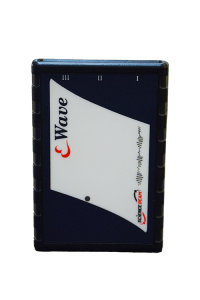What is physiotherapy?
Physiotherapy, also known as physical therapy, is a healthcare profession that focuses on optimizing physical function and mobility, preventing disability, and improving overall well-being. Physiotherapists, or physical therapists, are trained healthcare professionals who work with individuals of all ages to address a variety of musculoskeletal, neurological, cardiovascular, and respiratory conditions.
Key aspects of physiotherapy include:
Assessment and Diagnosis: Physiotherapists assess a patient’s physical condition, including mobility, strength, flexibility, and posture. Through observation and specialized tests, they diagnose physical impairments, functional limitations, and disabilities.
Treatment Planning: Based on the assessment, physiotherapists develop individualized treatment plans. These plans may involve a combination of manual therapy, therapeutic exercises, education, and various therapeutic modalities.
Manual Therapy: Physiotherapists often use hands-on techniques to manipulate joints, mobilize soft tissues, and improve overall musculoskeletal function. This may include joint mobilization, manipulation, massage, and stretching.
Therapeutic Exercise: Prescribing specific exercises is a central component of physiotherapy. These exercises are designed to improve strength, flexibility, endurance, and overall functional abilities. Patients are usually taught exercises to perform both during therapy sessions and at home.
Education: Physiotherapists educate patients about their conditions, treatment options, and strategies for self-management. They may provide guidance on posture, ergonomics, and lifestyle modifications to prevent further issues.
Pain Management: Physiotherapists use various techniques to manage pain, including manual therapy, exercise, and modalities such as heat or cold therapy. They may also educate patients on pain coping strategies.
Rehabilitation: Physiotherapy plays a crucial role in rehabilitation after surgery, injury, or illness. Physiotherapists help patients regain strength, mobility, and function, facilitating a smooth return to normal activities.
Preventive Care: Physiotherapists are involved in preventive care, promoting healthy lifestyles, and helping individuals reduce the risk of injuries and musculoskeletal problems.
Physiotherapy is applicable to a wide range of conditions, including:
- Musculoskeletal Disorders: Addressing issues related to muscles, bones, joints, and soft tissues.
- Neurological Disorders: Working with individuals with conditions such as stroke, multiple sclerosis, or spinal cord injuries.
- Cardiovascular and Respiratory Conditions: Assisting individuals with heart or lung problems to improve their endurance and respiratory function.
- Pediatric Conditions: Providing care for children with developmental or congenital disorders.
- Sports Injuries: Helping athletes recover from injuries and enhancing sports performance.
Physiotherapy is a collaborative process, and physiotherapists often work closely with other healthcare professionals to provide comprehensive care. The goal is to enhance the quality of life for individuals and promote physical well-being through evidence-based interventions.

Types of physiotherapy
Physiotherapy encompasses various specialized fields, each focusing on specific aspects of healthcare and addressing different types of conditions. Here are some common types of physiotherapy:
Orthopedic Physiotherapy: Specializes in the treatment of musculoskeletal disorders, including injuries to bones, joints, ligaments, and soft tissues. Orthopedic physiotherapists help with rehabilitation after surgeries, fractures, or sports injuries.
Neurological Physiotherapy: Focuses on individuals with neurological disorders such as stroke, traumatic brain injuries, multiple sclerosis, Parkinson’s disease, and spinal cord injuries. The goal is to improve mobility, balance, and functional independence.
Cardiorespiratory Physiotherapy: Deals with conditions affecting the heart and lungs. Physiotherapists in this field work with patients recovering from cardiac surgery, respiratory illnesses, and other cardiovascular conditions to improve breathing, endurance, and overall fitness.
Pediatric Physiotherapy: Specializes in the care of infants, children, and adolescents. Pediatric physiotherapists address developmental issues, congenital conditions, and injuries unique to younger populations, focusing on promoting motor skills and functional independence.
Geriatric Physiotherapy: Concentrates on the health needs of older adults. Geriatric physiotherapists work to improve mobility, balance, and strength, addressing age-related conditions such as osteoporosis, arthritis, and frailty.
Sports Physiotherapy: Aims to prevent and manage sports-related injuries, enhance athletic performance, and assist in the rehabilitation of athletes. Sports physiotherapists work with individuals of all ages participating in various sports and physical activities.
Pelvic Health Physiotherapy: Focuses on the assessment and treatment of conditions related to the pelvic region, including pelvic pain, incontinence, and dysfunction of the pelvic floor muscles. It is commonly used in the treatment of women’s health issues.
Women’s Health Physiotherapy: Addresses musculoskeletal and pelvic health issues specific to women, including pre- and post-natal care, pelvic pain, and conditions related to the reproductive system.
Oncology Physiotherapy: Supports individuals undergoing cancer treatment by addressing physical impairments, managing pain, and improving overall quality of life. Physiotherapists in this field work closely with oncology teams to provide comprehensive care.
Occupational Health Physiotherapy: Focuses on the prevention and management of work-related injuries and musculoskeletal disorders. Occupational health physiotherapists collaborate with employers to create ergonomic work environments and assist employees in returning to work after injuries.
Manual Therapy: Involves hands-on techniques such as joint mobilization, manipulation, and soft tissue massage. Manual therapists use their hands to assess and treat musculoskeletal conditions, aiming to improve joint mobility and reduce pain.
These are just a few examples, and there may be additional specialties within the field of physiotherapy. Physiotherapists often collaborate with other healthcare professionals to provide comprehensive and integrated care for individuals with diverse healthcare needs.
Is physiotherapy only effective for motion sickness?
Physiotherapy is not typically a primary treatment for motion sickness. Motion sickness is a condition characterized by nausea, dizziness, and vomiting that occurs when there is a disconnect between the visual input and the vestibular (balance) system in the inner ear, often during motion, such as in a car, boat, or airplane.
While physiotherapy primarily focuses on the assessment, treatment, and prevention of physical impairments and disabilities, it may not be the first-line intervention for motion sickness. However, certain physiotherapy techniques and exercises may indirectly help individuals manage symptoms related to motion sickness. These can include:
Vestibular Rehabilitation: Physiotherapists specializing in vestibular rehabilitation may use exercises to improve the function of the vestibular system, which plays a crucial role in maintaining balance. These exercises aim to minimize dizziness and enhance the body’s ability to adapt to motion.
Breathing and Relaxation Techniques: Physiotherapists can teach breathing and relaxation exercises to help individuals manage anxiety and nausea associated with motion sickness. Controlled breathing and relaxation techniques may alleviate some symptoms.
Postural and Balance Training: Improving overall postural control and balance through specific exercises may indirectly contribute to reducing the severity of motion sickness symptoms.
It’s important to note that motion sickness is a complex condition influenced by factors such as individual susceptibility, the mode of transportation, and environmental conditions. Common treatments for motion sickness include medications like antihistamines, which can be effective in alleviating symptoms.
If motion sickness is a concern, it’s advisable to consult with a healthcare professional, such as a physician or a specialist in travel medicine, to determine the most appropriate intervention. They can provide guidance on medications, behavioral strategies, and lifestyle modifications that may be effective in managing motion sickness.

The role of biofeedback in physiotherapy
Biofeedback plays a significant role in physiotherapy by providing a method for individuals to gain awareness and control over physiological processes within their bodies. Biofeedback involves using electronic monitoring instruments to measure, display, and teach individuals how to regulate physiological functions such as muscle activity, heart rate, and skin temperature. In physiotherapy, biofeedback is applied across various specialties and conditions. Here are some ways in which biofeedback is utilized:
Muscle Rehabilitation and Control: Biofeedback is commonly used to assess and train muscle activity. Electromyography (EMG) biofeedback, for example, measures muscle electrical activity and provides real-time feedback to individuals. Physiotherapists use this information to help patients learn to control and strengthen specific muscles, especially those affected by injuries, surgeries, or neuromuscular conditions.
Pelvic Floor Rehabilitation: In pelvic health physiotherapy, biofeedback is frequently employed for pelvic floor rehabilitation. Pelvic floor biofeedback allows individuals to visualize and control the strength and coordination of their pelvic floor muscles. This is beneficial for conditions such as urinary incontinence, pelvic pain, and pelvic organ prolapse.
Posture and Alignment: Biofeedback devices can be used to monitor and correct posture. Wearable sensors or devices can provide real-time feedback to individuals on their body position, helping them make adjustments to maintain better posture and reduce the risk of musculoskeletal issues.
Neurological Rehabilitation: In neurorehabilitation, biofeedback is used to assist individuals with neurological conditions, such as stroke or spinal cord injuries, in regaining control over their movements. Visual or auditory biofeedback helps patients understand and improve their motor patterns and coordination.
Pain Management: Biofeedback can be part of pain management strategies. By monitoring physiological indicators like heart rate variability or skin conductance, individuals can learn to modulate their body’s response to pain and stress, potentially reducing the perception of pain.
Stress Reduction and Relaxation: Biofeedback is valuable for teaching stress reduction and relaxation techniques. By monitoring parameters like heart rate, individuals can learn to control their physiological responses to stressors, promoting relaxation and overall well-being.
Respiratory Rehabilitation: Biofeedback is used to assist individuals with respiratory conditions, teaching them proper breathing techniques and control. This is especially relevant for conditions like asthma or chronic obstructive pulmonary disease (COPD).
Functional Movement Training: Biofeedback devices can be integrated into functional movement training programs to monitor and enhance specific movements during rehabilitation. This is particularly relevant for conditions involving motor control deficits.
Temperature Biofeedback: Skin temperature biofeedback is used to help individuals manage conditions influenced by temperature regulation, such as Raynaud’s disease. By providing feedback on skin temperature, individuals can learn to control blood flow to extremities.
The integration of biofeedback in physiotherapy empowers individuals to actively participate in their rehabilitation, enhances awareness of physiological processes, and promotes self-regulation. It complements traditional physiotherapy interventions, contributing to improved outcomes and patient engagement.
Is it possible to have physiotherapy at home?
Yes, it is possible to have physiotherapy at home through a service known as home physiotherapy or home-based physiotherapy. This approach allows individuals to receive physiotherapy services in the comfort of their own homes rather than traveling to a clinic or hospital. Home physiotherapy can be beneficial for various reasons, including convenience, accessibility, and personalized care

Here are some key aspects of home physiotherapy:
Individualized Care: Home physiotherapy provides the opportunity for physiotherapists to tailor their interventions to the specific needs and environment of the individual. This personalized approach can enhance the effectiveness of the treatment plan.
Convenience: Home-based physiotherapy is convenient for individuals who may have difficulty traveling to a clinic due to mobility issues, transportation challenges, or other health concerns. It eliminates the need for commuting and offers a more comfortable setting for therapy sessions.
Familiar Environment: Being in a familiar environment, such as one’s home, can contribute to a more relaxed and comfortable experience for the individual receiving physiotherapy. It may also facilitate better integration of therapy exercises into daily routines.
Family Involvement: Home physiotherapy allows for greater involvement of family members or caregivers in the rehabilitation process. The physiotherapist can educate and train family members on how to assist with exercises and provide support.
Accessibility: Home physiotherapy makes physiotherapy services more accessible to individuals in remote areas or those with limited access to transportation. It broadens the reach of healthcare services and ensures that individuals receive the necessary care in their homes.
Post-Surgery Rehabilitation: Home physiotherapy is often suitable for post-surgery rehabilitation, allowing individuals to recover and receive physiotherapy services without the need to travel to a clinic immediately after surgery.
Chronic Conditions: For individuals with chronic conditions, such as arthritis or neurological disorders, home physiotherapy can be an ongoing and convenient solution to manage symptoms and improve overall function.
Telehealth Options: With advancements in technology, some physiotherapy services also offer telehealth options. This involves virtual consultations and guidance through video calls, making it even more convenient for individuals to access physiotherapy services from home.
To arrange home physiotherapy, individuals can consult with their healthcare providers or physiotherapists to determine if this option is suitable for their specific needs. It’s essential to work with qualified and licensed physiotherapists who can conduct thorough assessments and design effective treatment plans tailored to the individual’s goals and conditions.
Discussion and conclusions about physiotherapy
Physiotherapy plays a crucial role in the healthcare system, offering a holistic approach to rehabilitation and preventive care. The discipline encompasses various specialties, each addressing specific aspects of physical health. The primary goal of physiotherapy is to optimize function, mobility, and overall well-being in individuals of all ages and across diverse health conditions.
One of the key strengths of physiotherapy lies in its ability to provide individualized care. Through assessments, physiotherapists identify impairments, functional limitations, and disabilities, tailoring treatment plans to meet the unique needs of each patient. This personalized approach contributes to the effectiveness of physiotherapy interventions.
The scope of physiotherapy extends beyond traditional clinic settings, with home-based physiotherapy and telehealth options becoming increasingly prevalent. These innovations enhance accessibility, allowing individuals to receive care in the comfort of their homes. Additionally, advancements in technology, such as biofeedback and wearable devices, enable physiotherapists to employ cutting-edge techniques for assessment and treatment.
Physiotherapy’s role in rehabilitation after surgeries, injuries, and neurological events is evident. The discipline aids in restoring mobility, improving strength, and enhancing overall functional abilities. Moreover, physiotherapy is integral in managing chronic conditions, promoting preventive care, and contributing to the overall health and well-being of individuals.
In conclusion, physiotherapy stands as a dynamic and evolving field within healthcare, addressing a wide spectrum of conditions and promoting patient-centered care. The discipline’s adaptability, incorporating technological advancements and extending services beyond traditional settings, reflects its commitment to meeting the diverse needs of patients.
Physiotherapy’s emphasis on evidence-based practice ensures that interventions are grounded in research and best practices. This commitment to ongoing learning and refinement of techniques contributes to the field’s credibility and effectiveness.
As healthcare continues to evolve, physiotherapy remains a cornerstone in the continuum of care, collaborating with other healthcare professionals to provide comprehensive and integrated services. The discipline’s impact spans across age groups and conditions, from pediatric care to geriatric rehabilitation, showcasing its versatility and relevance in promoting health and functionality.
In summary, physiotherapy’s patient-centric approach, adaptability, and contribution to rehabilitation and preventive care position it as a vital component of modern healthcare. As the field continues to evolve, embracing innovation and expanding access to care, physiotherapy will likely play an increasingly prominent role in promoting and restoring physical well-being.


